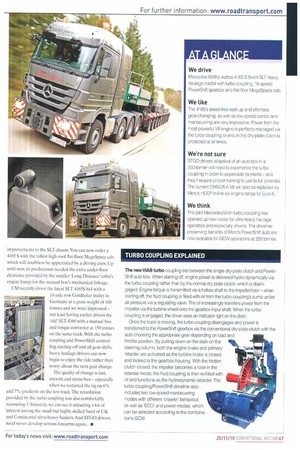TURBO COUPLING EXPLAINED
Page 47

If you've noticed an error in this article please click here to report it so we can fix it.
The new VIAB turbo coupling sits between the single dry-plate clutch and PowerShift auto box. When starting off, engine power is delivered hydro-dynamically via the turbo coupling rather than by the normal dry plate clutch, which is disengaged. Engine torque is transmitted via a hollow shaft to the impeller/rotor — when starting off, the fluid coupling is filled with oil from the turbo coupling's sump under air pressure via a regulating valve. The oil increasingly transfers power from the impeller via the turbine wheel onto the gearbox input shaft. When the turbo coupling is engaged, the driver sees an indicator light on the dash.
Once the truck is moving, the turbo coupling disengages and power is transferred to the PowerShift gearbox via the conventional dry-plate clutch with the auto choosing the appropriate gear depending on load and throttle position. By pulling down on the stalk on the steering column, both the engine brake and primary retarder are activated as the turbine brake is closed and locked to the gearbox housing. With the friction clutch closed, the impeller becomes a rotor in the retarder mode, the fluid coupling is then re-filled with oil and functions as the hydrodynamic retarder. The turbo coupling/PowerShift driveline also includes two low-speed manoeuvring modes with different 'crawler' behaviour, as well as 'ECU' and power modes, which can be selected according to the combination's GCW.




































































































































